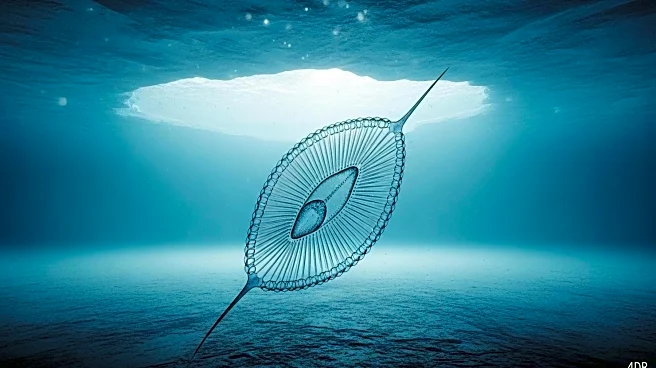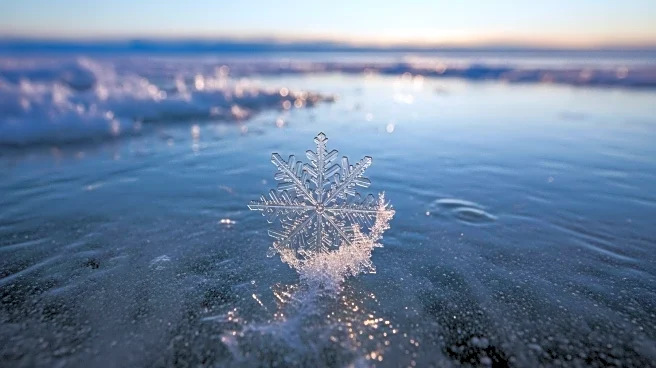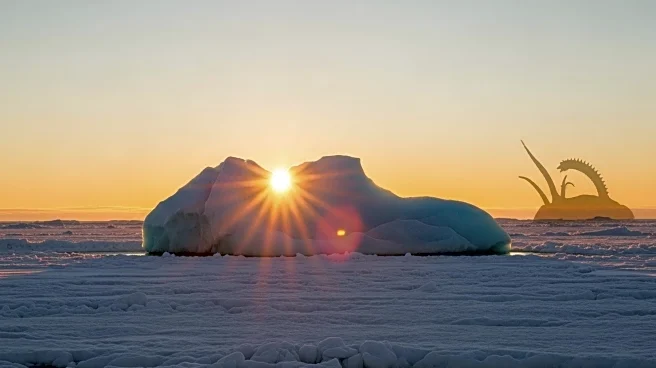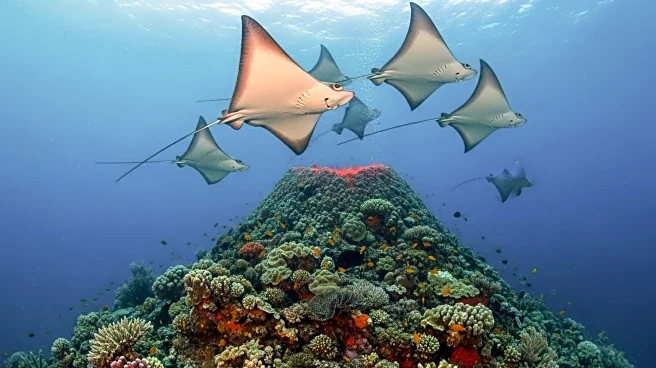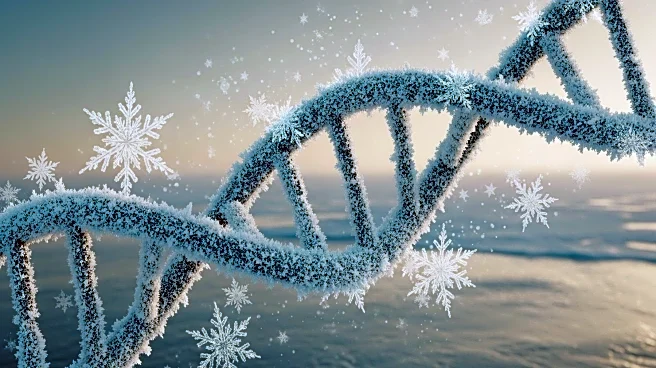What's Happening?
Stanford researchers have uncovered a groundbreaking discovery regarding Arctic diatoms, which are a type of algae. Contrary to previous beliefs that these organisms remained dormant in polar ice, the study reveals that diatoms actively move within the ice even at temperatures as low as -15°C. The research was conducted aboard the ice-breaking vessel Sikuliaq, where scientists drilled cores from the Chukchi Sea. The diatoms move by secreting a sticky mucilage that adheres to nearby surfaces, allowing them to glide through microscopic channels in the ice. This movement is facilitated by actin and myosin proteins, similar to those found in human muscles. The study was led by Manu Prakash, associate professor of bioengineering at Stanford, and Qing Zhang of the Prakash Lab, with findings published in the Proceedings of the National Academy of Sciences.
Why It's Important?
This discovery has significant implications for our understanding of polar ecosystems. The active movement of diatoms suggests they play a year-round role in recycling nutrients and fueling food chains in the Arctic. Additionally, their activity could influence sea ice melt and freezing processes, potentially affecting global climate patterns. The ability of diatoms to move in extreme cold conditions highlights their specialized adaptation, which may offer insights into resilience strategies for other organisms facing climate change. This research challenges long-held assumptions about life in polar regions and underscores the dynamic nature of these ecosystems.
What's Next?
Further research is likely to explore the broader ecological impacts of diatom activity in Arctic ice. Scientists may investigate how these algae contribute to nutrient cycles and food webs, as well as their potential role in climate regulation. The findings could prompt additional studies on other polar organisms and their adaptations to extreme environments. Understanding these mechanisms may inform conservation strategies and climate models, as the Arctic continues to experience rapid warming.
Beyond the Headlines
The discovery of active diatom movement in Arctic ice raises questions about the resilience of polar ecosystems in the face of climate change. It suggests that life in these regions is more dynamic than previously thought, potentially offering new perspectives on adaptation and survival strategies. The study also highlights the importance of interdisciplinary research in uncovering complex biological processes and their implications for global environmental systems.




